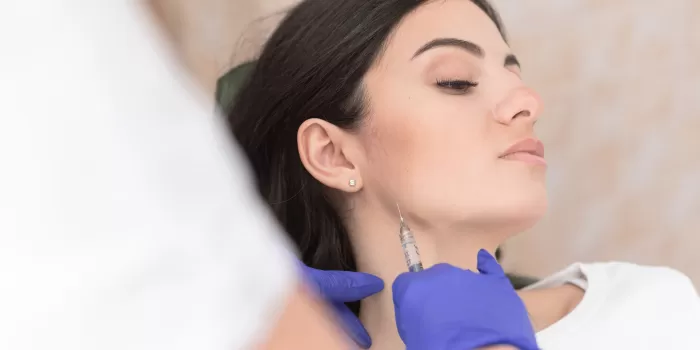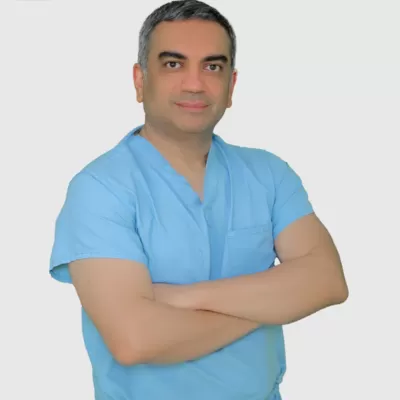Follow Us on Social media
Jaw surgery
Maxillofacial surgery is corrective surgery for overlap and cross occlusion in which a maxillofacial surgeon moves the upper and lower jaws into their proper positions to correct the occlusion and improve the symmetry of the face and the airway opening. Orthognathic surgery can help patients with malocclusion, facial asymmetry, or severe sleep apnea. Correcting these conditions is essential because they can cause impaired facial function, speech and chewing difficulties, joint pain, and sleep disturbances.
Treatment of malocclusion and facial symmetry problems:
Treatment begins with an evaluation by an oral and maxillofacial surgeon. It includes X-rays, facial measurements, and a detailed study of the teeth to create a comprehensive and customized treatment plan. The surgery is considered safe for suitable candidates and is performed under general anesthesia with a short hospital stay. Surgery may involve treating one or both jaws, depending on where the jaw deformity occurs. Maxillary surgery treats open occlusion, cross occlusion, and upper jaw protrusion.
In contrast, mandibular surgery aims to correct a regression or protrusion of the lower jaw. After the surgery, you will feel discomfort and swelling as you adjust to your new appearance. Your surgeon will provide you with specific instructions for aftercare to ensure that healing occurs appropriately. The healing phase can take about 6-12 weeks, during which the maxillofacial surgeon will finish aligning the jaws with orthotics. Orthotics should be worn for months or years, depending on the type of braces and how deformed the jaw is.
Candidates for cosmetic jaw surgery:
People who suffer from curvature of the lower jaw as a congenital disability since birth, which is likely to affect the fetus in the first months of pregnancy due to taking prohibited drugs or genetic imbalances.
People who have difficulty in the process of closing the mouth quickly or chewing food naturally as a result of a deviation in the lower jaw, which leads to a defect in the functions of the mouth, face, and jaws.
People are diagnosed with malignant tumors in the jawbone, which results in surgical operations to remove the affected tissue; in this case, after completing the treatment program, the doctor begins to develop a treatment surgical plan to compensate for the defect in the jaw bones.
People who suffer from the problem of inconsistency in the size of the jaw with the rest of the facial features or people who suffer from the problem of jaw atrophy and its growth stops at a certain age, such cases are famous all over the world, and surgical solutions have shown impressive results in dealing with them.
People suffer from fractures or deformities in the jaw bones due to neglect and errors caused by the birth process.

What are the types of jaw injury?
Type I - the upper jaw receding inward: In this case, the lower jaw appears slightly lower than the upper jaw, which makes it recede inward, allowing the upper jaw to appear more prominent, and in this case, the doctor works to separate the lower jaw and reinstall it in its correct place towards outside to fit the jaws correctly. The second type is the upper jaw protruding outward: in this case, the lower jaw appears prominently forward compared to the upper jaw, which makes it appear in a somewhat prominent shape, allowing the upper jaw to recede towards the back, and in this case, the plastic surgeon separates the lower jaw and then reinstalls it in its proper place a little inward to avoid this protrusion.
Benefits of surgery for the jaws:
- occlusal improvement
- Correcting speech problems and swallowing difficulties
- Preventing dental erosion and grinding
- Fix jaw closing problems
- Increased ease of chewing and eating
- Reducing pain caused by temporomandibular joint disorders
- Correcting facial symmetry problems, such as open bites, overbites, cross bites, and small chins.
Before jaw surgery:
First and in most cases, the orthodontist will place the braces on your teeth before surgery. Orthodontics is usually worn 12 to 18 months before surgery so that your teeth are level and aligned in preparation. Then the orthodontist and oral and maxillofacial surgeon work together to develop your treatment plan. X-rays, pictures, and models of your teeth are part of planning for your jaw surgery. Sometimes, spacing the way the teeth fit together requires either reshaping the teeth, covering the teeth with crowns, or completing the correction. 3D computed tomography, computer-guided treatment planning, and temporary orthodontic appliances can aid tooth movement and reduce orthodontic placement time. Sometimes these efforts help eliminate the need for jaw surgery. Sometimes, virtual surgical planning will be used to guide the surgeon in adjusting and correcting the position of the jaw clip during the procedure to obtain an optimal result.
After the operation:
It is necessary to have a recovery period of not less than two weeks and to stay under the strict observation of the doctor for a period of not less than 48 hours starting from the time of recovery in order to notice the results and avoid the deal with potential complications. The doctor will give you some instructions and advice that you should take, such as the type of food that should be eaten and personal care methods after the operation. The MTS will return to work, which will not be before at least a week, and may reach three weeks. The recovery phase will begin after six weeks, but the final recovery from the surgery may take three months. It should be avoided from all strenuous physical activities throughout the postoperative period to avoid complications. It is also necessary to adhere to all the instructions the doctor alerts to and follow the postoperative medication plan. Once the surgery is completed, the patient will not often notice the results of the operation clearly, but after a period of 10 days to two weeks, the surgery results will begin to appear significantly.
Jaw surgery in Iran:
Jaw surgery in Iran has advanced significantly in the past two decades, which qualifies it to compete with the United States and Europe today. In addition, Iran has become a leading country in terms of the number of successful jaw surgery operations that are performed, as the most complex operations are currently performed in specialized hospitals and clinics. Throughout the country with very high success rates, one of the most critical factors for choosing Iran is the cost of such treatments in the country, as the cost of jaw surgery in Iran costs about 70% less than the price of this same operation in Western countries. As for the cost of jaw surgery in Iran, it certainly varies depending on the jaw surgery and the quality of the hospital.


